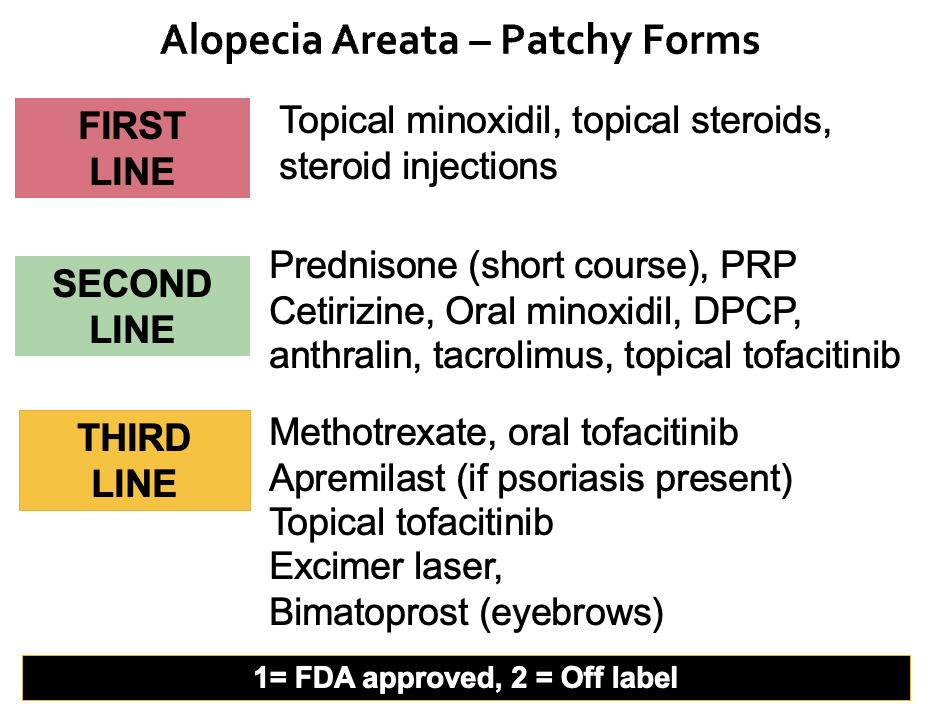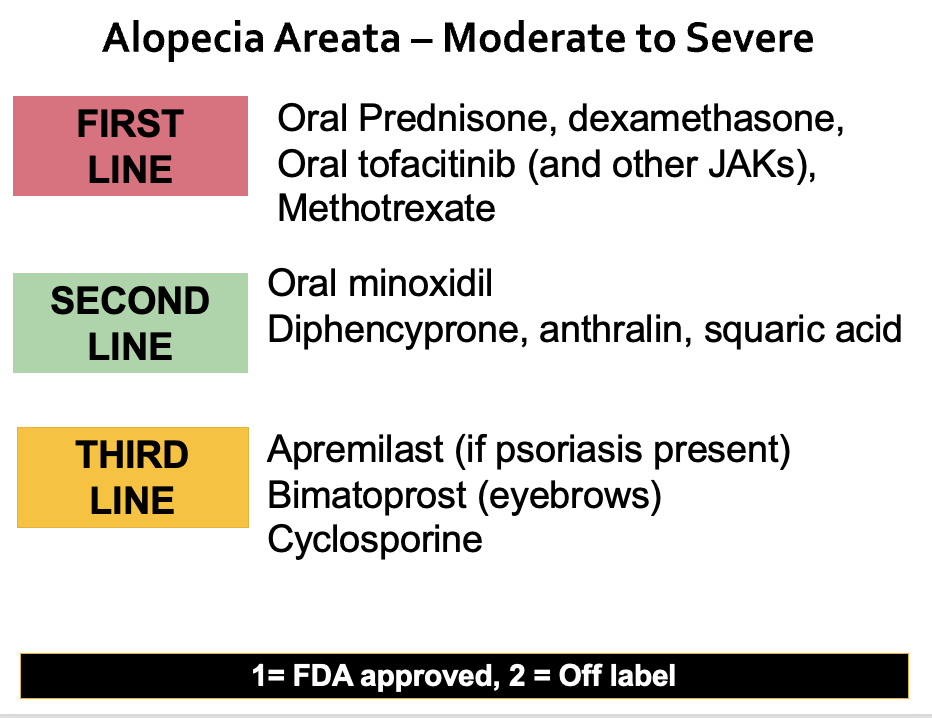Alopecia Areata: Patients in Age 21-40 Age Group Comprise Most Common Group
Population Based Study Highlights Key Demographic Factors for Alopecia Areata
Small studies in alopecia areata are common. The problem with small studies is that it’s difficult to get an accurate estimate of key demographic features of alopecia areata that might exist in the population. Authors from the US set out to perform analysis of alopecia areata cases from 2006 to 2016 using a large database known as the National Ambulatory Medical Care Survey. The used the data to exact information related to patient visits for AA in the ambulatory setting. The authors also evaluated medications prescribed and associated medical conditions that patients had.
Results
During the 10 year period, there were a total of 2.2 million weighted visits for alopecia areata. 65 % of patients were female. The average age was 37.8. 35 % of all visits were those aged 21-40 years. 50 % of visits for alopecia areata were in those under 40 years and 50 % were in those over 40 years.
In this US data base, 78 % of visits for alopecia areata were performed by dermatologists. Primary care physicians performed 7 % of the visits.
In addition to a diagnosis of alopecia areata, the top three diagnoses associated with alopecia areata were seborrheic dermatitis (3.5%, depression (4.3%) and thyroid disorders (3.1 %). Interestingly, patients with alopecia areata seen by dermatologists were 28.4 times more likely to be diagnosed with seborrheic dermatitis compared to patients seen by dermatologists who did not have alopecia areata. 3.5 % of patients with AA had seborrheic dermatitis compared to 0.9 % of those without AA.
Treatments Prescribed to Patients.
Topical steroids were prescribed to 34 % of patients. Nearly one quarter had steroid injections. 5.8% had minoxidil and 1 in 10 patient had both steroid injections and topical steroids.
Conclusions and Comments
This is an interesting and large study which highlights some important points:
1) Topical steroids and steroid injections and minoxidil are still very much a key part of treatment for alopecia areata. We have alot of treatments for alopecia areata. We just can’t ignore the fact that for 70-80 % of patients, topical steroids, steroid injections and minoxidil are going to be the key treatments prescribed.
2) This study highlights the importance of the 21-40 age group as being among the most common age group that dermatologists see. This is such a challenging time in life when people are completing schooling or training, moving, looking for work, forming social connections and pursuing relationships. It is challenging to have alopecia areata at any age, but these are challenging times in this age group.
3) This study shows that female patients comprise a greater number of patients seen by dermatologists. It’s interesting as it calls into question as to whether the incidence of alopecia areata in females is truly higher than in males. This is a large enough study and the differences are great enough (65 % female and 35 % male) that one would wonder whether alopecia areata truly is more common in women.
4) Finally, the study highlighted a significant increase in the likehood of being diagnosed with seborrheic dermatitis in patients with alopecia areata. The exact connection is not clear and certainly we don’t tend to think that treatment of the SD impacts alopecia areata to a great extent. Further studies will help clarify why the link or association is present and whether aggressive treatment of SD is important.
REFERENCE
Gutierrez Y et al. Alopecia areata in the United States: a ten-year analysis of patient characteristics, comorbidities, and treatment patterns. Dermatol Online J . 2021 Oct 15;27(10)
This article was written by Dr. Jeff Donovan, a Canadian and US board certified dermatologist specializing exclusively in hair loss.


